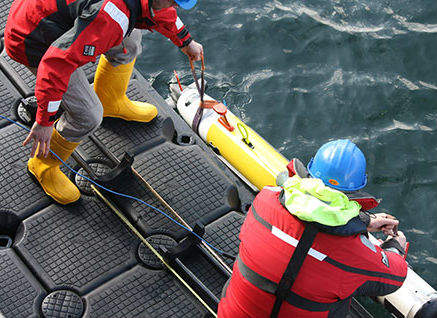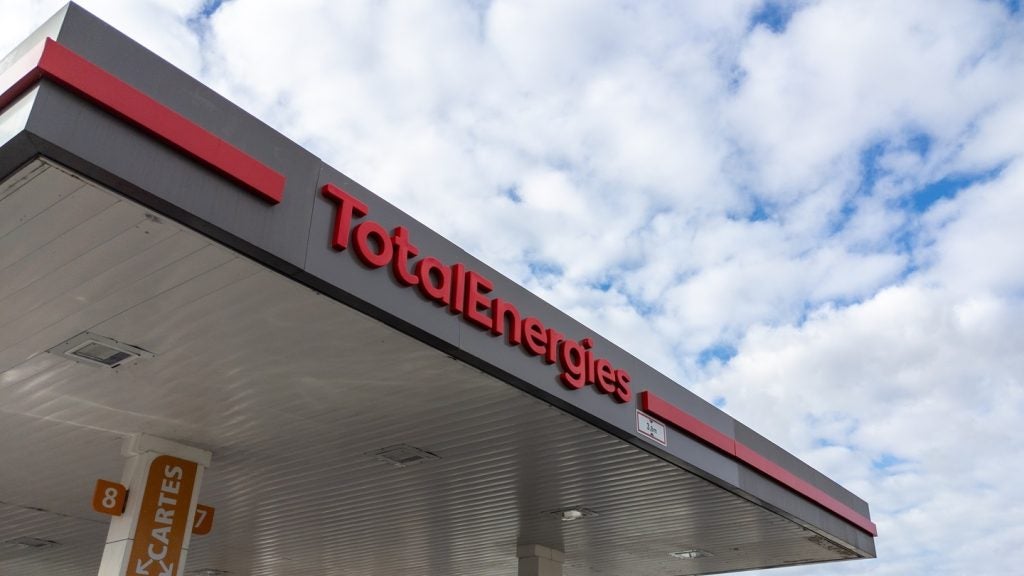

With offshore pipelines, it is essential to be able to detect underwater objects and structures so that engineers can identify problems before a disaster strikes. Using techniques gathered from previous research conducted on sea mammals in 2013, researchers have figured out a way to detect objects underwater without the need to make direct contact.
The new research comes from Heriot-Watt University’s Ocean Systems Laboratory and the technology could have a range of applications in the offshore sector. Subsea detection is becoming an increasingly integral part of offshore operations, and companies are often looking for new ways to be more efficient with their projects.
Inspiration from nature
The Heriot-Watt Ocean Systems Laboratory is a science and engineering research centre with three main areas of exploration: autonomous systems, sensor modelling and analysis, and experimental validation. Researchers there have been inspired by how dolphins detect objects around them and have developed what’s called an enhanced, wideband sonar system.
The sonar used by dolphi ns is a result of millions of years of evolution, and the mammals significantly outperform man-made sonars in terms of object detection and identification.
In a 2013 paper scientists set about to harness this in some way. By observing dolphin’s echolocation clicks the researchers found that dolphins can even tell the difference between containers that hold freshwater, saltwater, syrup and oil from 10m away.
How well do you really know your competitors?
Access the most comprehensive Company Profiles on the market, powered by GlobalData. Save hours of research. Gain competitive edge.

Thank you!
Your download email will arrive shortly
Not ready to buy yet? Download a free sample
We are confident about the unique quality of our Company Profiles. However, we want you to make the most beneficial decision for your business, so we offer a free sample that you can download by submitting the below form
By GlobalData"Bottlenose dolphins are extremely good at detecting objects in the water; using sonar they can detect fish in the sand which can’t be seen by the eye," said Heriot-Watt’s Associate Professor Dr Keith Brown. "Earlier research also showed that dolphins can differentiate between the contents of a variety of filled aluminium bottles using signal processing."
The researchers analysed the characteristics of different signals and reproduced these frequencies within the same parameters using transducers. The system will be deployable on a range of nautical vehicles, including autonomous underwater vehicles and remotely operated vehicles (ROVs).
By doing so multiple surveys could be conducted from one ship which could be cost-effective for companies that perform expensive oil rig surveys.
What’s new about this technology?
The new wideband sonar system could provide images with greater environmental, seabed and structural detail than ever captured before. Existing sensor devices have previously only been able to produce an outline image, rather than penetrate the object.
Detection is required to accurately locate objects underwater but these new sensors can now also identify their structure. For example, users of the sensor can detect hairline cracks in an oil rigs’ support legs, changes to the sediment on the seafloor, determine whether an underwater support is still structurally sound, and also identify wildlife on the seabed.
"This breakthrough means our new wideband sonar system can provide its users with even greater environmental, seabed and structural detail," says Brown.
Being able to spot tiny cracks could help extend the life of oil and gas pipelines, enabling maintenance work to be carried out before they get too large to be fixed.
The technology could also be used to scan for substances such as explosives; a useful tool for military operations. The sensors can show what lies within objects by using the robots, rather than having to investigate them manually, so army troops would have greater safety when inspecting potentially dangerous situations.
A growing concern for the oil and gas industry is decommissioning, which the sensors can help with as the robots can assess whether left over equipment is safe for the environment.
Leading collaborators
The research has been conducted in collaboration with Hydrason Solutions, a high-tech sonar and underwater systems company, as well as CENSIS, the Scottish Innovation Centre for sensor and imaging systems.
Hydrason, which is based in Edinburgh, has already established a good reputation in the military and energy sectors, but the new system could broaden its usefulness across a whole range of industries, including fishing.
"This system will set a new standard in acoustic object detection and identification in complex subsea environments," says Hydrason Solutions chief executive Chris Capus. "It presents us with a great opportunity in fisheries, for example, where it could be used to monitor the health of prawn beds."
Capus also said that this research could be part of a wider transition towards autonomous working, as ROVs are being used. The increasing trend towards automation in the offshore industry means that workers may no longer be exposed to dangerous environments, as the majority of the project work can be done remotely.
Also, more automation may potentially mean less manpower, so offshore industries could make significant cost savings if jobs can be made more efficient with the use of robots.
CENSIS has supplied a grant of £40,000 for the project, which is expected to last ten months, along with project management support.
"This latest initiative demonstrates the ground-breaking talent Scotland has in both its business and academic communities," says CENSIS chief executive Ian Reid. "This project has particular relevance to the energy industry, which has faced a number of challenges in the last 18 months. By embracing new ways of working and technological advances, like the wideband sonar system, they could realise significant cost savings and efficiencies."
State-of-the-art technology
Reid has expressed his excitement for the sensor project and the influence of Scottish innovation in this sector in general.
"Hydrason and Heriot-Watt University are at the forefront of research in sensor and imaging systems," he says. "This latest initiative demonstrates the ground-breaking talent Scotland has in both its business and academic communities. Through their combined endeavour, they have the ability to create state-of-the-art, world-leading technology."
By mimicking dolphin noises, this new technology could play a big part in many areas of the industry chain, from safe and secure construction of equipment to taking it apart again, and could soon have a strong, worldwide influence on the way data is collected.







